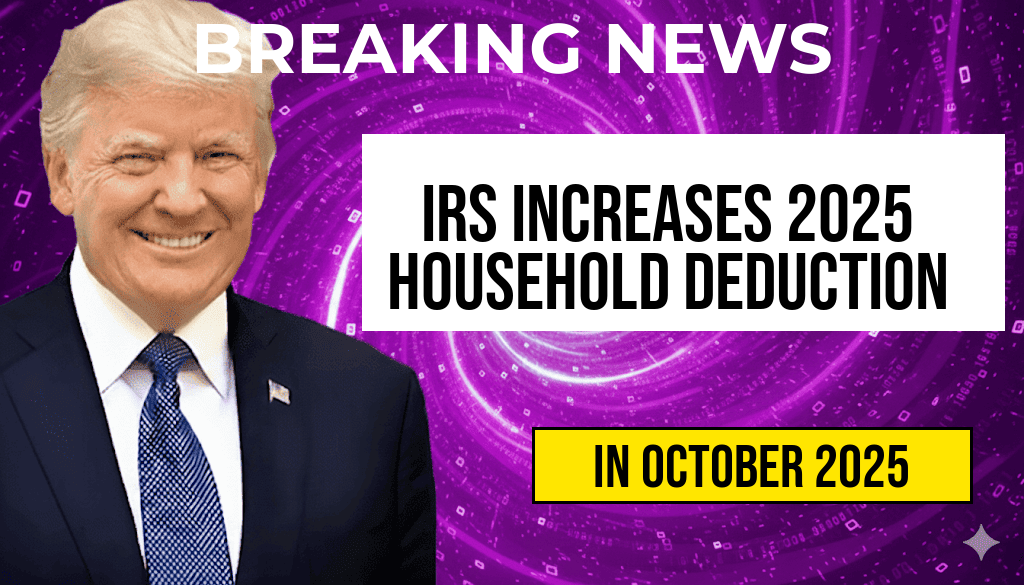IRS Raises Standard Deduction for Heads of Household to $22,500 in 2025, Marking a $600 Increase
The Internal Revenue Service (IRS) has announced that the standard deduction for heads of household taxpayers will increase to $22,500 starting in the 2025 tax year. This adjustment represents a $600 rise from the previous year’s deduction of $21,900. The change reflects ongoing efforts to adjust tax parameters for inflation and aims to reduce the taxable income for qualifying filers, providing some relief amid economic shifts. The increase is part of the IRS’s annual inflation adjustments, which help maintain the value of tax benefits over time. Taxpayers who qualify as heads of household can expect to see a modest but meaningful boost in their deductions, potentially lowering their overall tax liability.
Understanding the Head of Household Filing Status
The head of household filing status is designed for taxpayers who are unmarried or considered unmarried on the last day of the year and who provide a significant amount of support for a qualifying person, such as a child or other dependent. This status typically offers a higher standard deduction and more favorable tax brackets compared to single filers, recognizing the additional responsibilities often borne by single parents and guardians.
Qualifying for this status requires meeting specific criteria, including maintaining a household for more than half the year and having a qualifying dependent. The IRS provides detailed guidelines on eligibility, which can be reviewed on their official website or through tax preparation resources.
Details of the 2025 Standard Deduction Adjustment
| Tax Year | Standard Deduction | Increase from Previous Year |
|---|---|---|
| 2024 | $21,900 | – |
| 2025 | $22,500 | $600 |
The adjustment reflects an inflation rate of approximately 2.7%, aligning with broader price level changes and supporting taxpayers in managing their tax burdens more effectively. The IRS regularly updates these figures, which also influence other tax-related figures such as exemption amounts and income brackets.
Implications for Taxpayers
For eligible filers, the increase in the standard deduction translates to a reduction in taxable income, which can lead to lower tax bills. For example, a single parent supporting a child who qualifies as a head of household might see a tangible decrease in their taxable income by $600, potentially pushing them into a lower tax bracket or decreasing the amount owed.
Tax professionals recommend reviewing one’s filing status and deductions early in the tax season to optimize returns. Additionally, the increase may influence tax planning strategies, including considerations around itemized deductions versus the standard deduction, especially for those with significant deductible expenses.
Broader Context of Inflation-Adjusted Tax Figures
The IRS’s annual adjustments aim to counteract the effects of inflation, which can erode the real value of tax credits and deductions over time. According to the IRS, these adjustments are based on changes in the Consumer Price Index (CPI), ensuring that tax benefits stay aligned with economic realities.
While the $600 increase may seem modest, it plays a part in a broader framework of tax policy adjustments designed to provide relief and maintain fairness in the tax system. Other figures affected by inflation include the standard deduction for other filing statuses, income thresholds for various credits, and contribution limits for retirement accounts.
Additional Resources and Considerations
- Wikipedia: Standard Deduction — for an overview of how the deduction functions across different tax years.
- Forbes: Impacts of 2025 Tax Changes — analysis on how these updates may influence taxpayers’ financial planning.
- IRS: About the Standard Deduction — official guidance on deduction eligibility and calculations.
Taxpayers are encouraged to consult with tax professionals or utilize IRS resources to understand how these changes impact their individual situations. Staying informed about annual updates can help maximize benefits and ensure compliance with evolving tax laws.
Frequently Asked Questions
What is the new standard deduction for Heads of Household in 2025?
The standard deduction for Heads of Household in 2025 has increased to $22,500.
By how much has the standard deduction increased for 2025?
The standard deduction has increased by $600 in 2025.
When will the 2025 tax year be relevant for filing?
The 2025 tax year applies to tax returns filed in the year 2026, typically starting from January 2026.
Why did the IRS increase the standard deduction for 2025?
The IRS increased the standard deduction to account for inflation and to provide taxpayers with additional tax relief.
Does the standard deduction change for other filing statuses in 2025?
Yes, the standard deduction varies for different filing statuses, but the article specifically highlights the increase for Heads of Household.

Leave a Reply